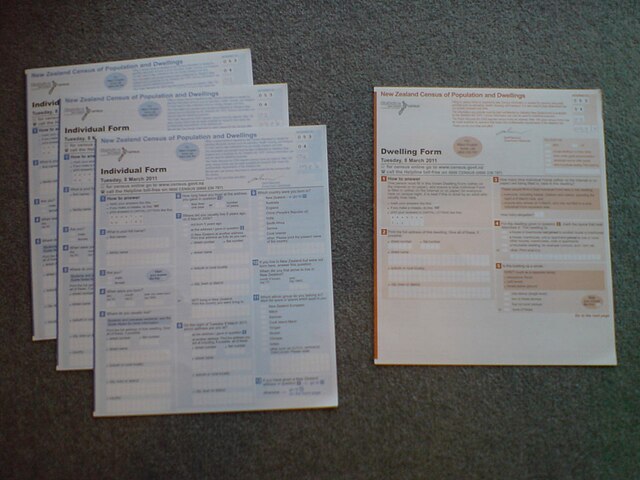The New Zealand Census of Population and Dwellings is a national population and housing census conducted by Statistics New Zealand, a government department, every five years. There have been 34 censuses since 1851. In addition to providing detailed information about national demographics, the results of the census play an important part in the calculation of resource allocation to local service providers.
Forms that were intended for the (cancelled) 2011 census. At left, the forms for individual persons surveyed; at right, a form for the overall household. The 2013 census forms were identical, save for the dates.
Statistics New Zealand, branded as Stats NZ, is the public service department of New Zealand charged with the collection of statistics related to the economy, population and society of New Zealand. To this end, Stats NZ produces censuses and surveys.
Commuting patterns in the Wellington region are shown; darker red lines indicate greater traffic. Source: Commuter view New Zealand, 2006 Census of Population and Dwellings.
Statistics New Zealand publishes trade information, export and import data, tourism, and so forth. This information assists government planners as well as business activity.
In colonial times, there was a "Blue Book" of official statistics, compiled by various magistrates. Here is a photo of the table of contents dated 1851 for the southern island, then called "New Munster". Source = Statistics New Zealand (National Archives).




